NASAs Perseverance Rover Captures The Sounds Of Mars Adding Another Dimension To Martian Exploration
Two microphones on NASA's Perseverance Rover have captured the sounds of Mars and beamed them back to Earth.
Since touching down on the Martain surface the Perseverance rover has recorded nearly five hours of Martian wind, gravel crunching beneath the rovers wheels and the sound of its whirring motors.
Baptiste Chide, a planetary scientist who studies data from the microphones at L’Institut de Recherche en Astrophysique et Planetologie in France, said: "It’s like you’re really standing there.
"Martian sounds have strong bass vibrations, so when you put on headphones, you can really feel it. I think microphones will be an important asset to future Mars and solar system science."
NASA said in a statement released yesterday, 18th October, that the rover is the first spacecraft to record the sound of the Red Planet using dedicated microphones.
The microphones are not cutting edge million-dollar pieces of equipment but commercially available off the shelf devices.
One of the mics rides on the side of the rover’s chassis. The second mic sits on Perseverance’s mast as a complement to the SuperCam laser instrument.
"The body mic was provided by NASA’s Jet Propulsion Laboratory in Southern California, while the SuperCam instrument and its microphone were provided by the Los Alamos National Laboratory (LANL) in New Mexico and a consortium of French research laboratories under the auspices of the Centre National d’Etudes Spatiales (CNES)."
The SuperCam studies rocks and soil samples by zapping them with a laser and then analysing the resulting water vapour.
The laser pulses hundreds of times on each target which created opportunities for the microphone to pick up the 'zapping' sounds.
So far the microphone has recorded over 25,000 of these 'zaps'.
The recording are teaching experts about the Martian atmosphere.
As sound travels through the air the SuperCam mic monitors "microturbulences" which adds to the ability of scientists to study the planet's atmosphere.
The mic adds to the rover's wind sensors which form part of the suite of atmospheric tools called Mars Environmental Dynamics Analyzer (MEDA).
"MEDA’s sensors sample the wind’s speed, pressure, and temperature one to two times per second for up to two hours at a time. SuperCam’s microphone, on the other hand, can provide similar information at a rate of 20,000 times per second over several minutes."
According to NASA, the mic lets researchers study how sound travels on Mars. They previously knew that because the atmosphere is less dense on the red planet, higher-pitched sounds, in particular, would be hard to hear.
As a result, several scientists were surprised when the microphone picked up the Ingenuity helicopter’s buzzing rotors during its fourth flight, on April 30, from a distance of 80 metres(262 feet)
Information from the helicopter's audio allowed researchers to eliminate two of three models developed to predict how sound travels on Mars.
Nina Lanza, a SuperCam scientist who works with the microphone data at LANL, said: "Sound on Mars carries much farther than we thought.
"It shows you just how important it is to do field science.”
Sound can also be used to improve the maintenance of equipment on Mars as it gives crucial clues to engineers about how the machinery is working.
Vandi Verma, Perseverance’s chief engineer for robotic operations at JPL, said: "We would love to listen to these sounds regularly.
"We routinely listen for changes in sound patterns on our test rover here on Earth, which can indicate there’s an issue that needs attention.”
NASA, JPL-Caltech, LANL, CNES, CNRS, IRAP, DPA/NF/Peter Barker
-
 12:12
12:12
The History Speaks (Books Reader)
1 year agoIs There Life on Mars NASA’s 60 Year Quest | NASA's Perseverance Rover May Already Have Evidence
132 -
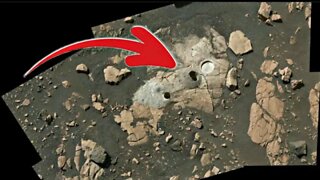 1:53
1:53
Theshahsalman
1 year agoNASA’s Perseverance Mars Rover Investigates Geologically Rich Area
90 -
 37:31
37:31
MYSTERIOUSREALITIESNOW
11 months agoMars Unmasked Exploration Unearths Martian Anomalies and Accelerates Mars Colonization Plans
6421 -
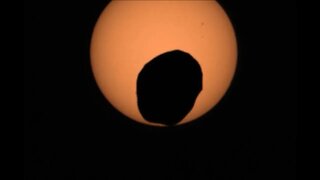 1:02
1:02
SomET
2 years agoSom ET - 78 - Mars - Perseverance Rover Sees Solar Eclipse on Mars
50 -
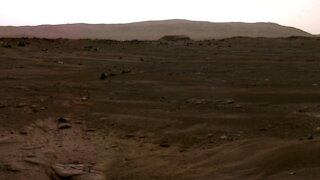 3:18
3:18
rumblestaff
3 years agoMars Perseverance Rover Captures Stunning Panorama (with SOUND!)
5.05K3 -
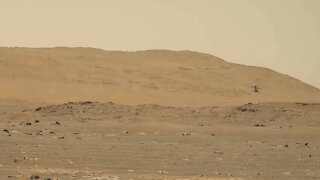 2:44
2:44
SCI
3 years agoNASA Captures Sound and Video of Ingenuity Helicopter Flight on Mars
10.5K88 -
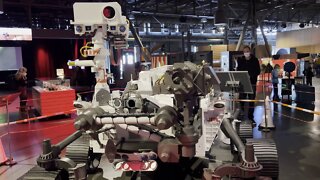 2:03
2:03
Travelling Around the World
2 years agoPerseverance Mars Rover at the Exploratorium in San Francisco (4K)
18 -
 2:10
2:10
WFTX
3 years agoNASA perseverance lands on Mars
921 -
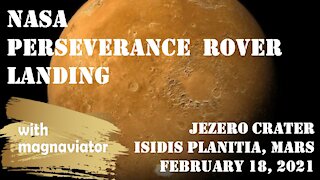 4:15
4:15
magnaviator
3 years ago $0.02 earnedAmazing Footage of NASA Perseverance Rover's Landing on Mars
79 -
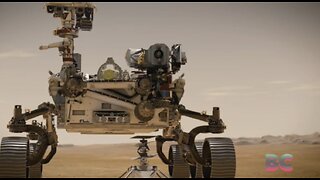 1:07
1:07
B.C. Begley
1 year agoNASA’s Perseverance Mars Rover Enters Third Year in Search for Signs of Life at Jezero Crater
831